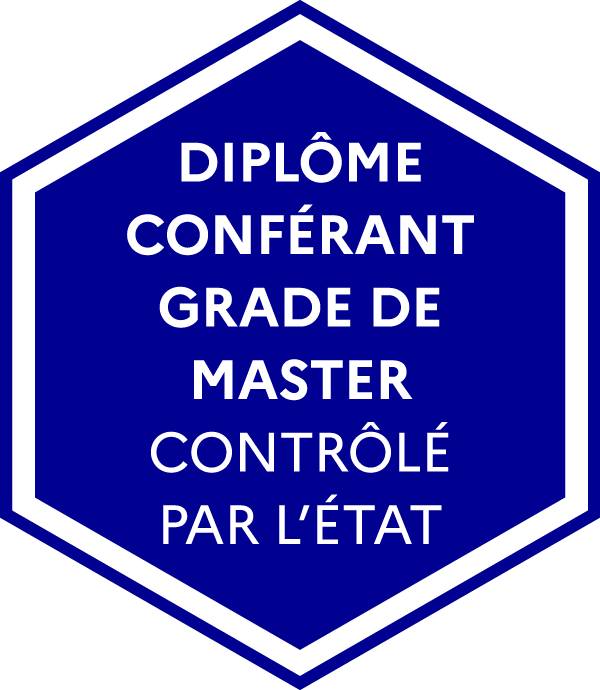Number of hours
- Lectures 30.0
- Projects -
- Tutorials -
- Internship -
- Laboratory works 30.0
ECTS
ECTS 5.0
Goal(s)
The purpose of this module is to go beyond the basic one-dimensional and deterministic approach of signals, providing theoretical and practical foundations for analysing and processing:
- random signals (spectral analysis and optimal filtering),
- images (foundations of image processing by covering both basic and more advanced topics illustrated on some real examples)
Responsible(s)
Florent CHATELAIN
Content(s)
Image processing
- Definition of a digital image
- Color theory and color spaces
- Point-wise image transformations with applications in image enhancement
- Linear and non-linear image filtering
- Representation and processing of images in the Fourier domain
- Edge detection
- Mathematical morphology
- Image segmentation
- Image processing based on machine/deep learning
Spectral analysis
- Non parametric (or Fourier) spectral analysis
- Definition of the power spectral density
- Estimation of the auto-correlation function, bias and variance
- Correlogram (Balckman-Tuckey) : bias and variance trade-off, normalization, application
- Welch's periodogram, bias and variance trade-off, normalization
- Parametric spectral analysis
- Presentation of the approach, usefulness and interest
- Interpretation of the spectral estimator by ARMA(p,q) model, link with peaks and valleys of the PSD
- AR estimation
- ARMA estimation
- High resolution methods (optional)
- Prony
- CAPON
- MUSIC
- Application (lab): analysis of the vibration pollution of an industrial system
Optimal filtering
- Wiener filtering
- Principles, assumptions, Wiener-Hopf equation
- Non-causal optimal filtering
- Optimal causal filtering: Bode-Shannon decomposition
- Continuous and discrete time filters (IIR)
- Discrete Wiener filter
- Wiener-Hopf equation of the FIR filter
- Linear prediction, coding (analysis and synthesis) and AR parametric modeling
- Applications: periodic noise denoising (lab), LPC vocoder
- Adaptive algorithms
- Assumptions, notion of recursion (prediction/correction structure) and adaptivity (example of the estimator of a mean)
- RLS filter with exponential forgetting: algorithm, adaptivity/convergence trade-off
- LMS filter: algorithm, adaptivity/convergence trade-off
- Applications: echo cancellation in audio systems, estimation of foetal ECG (lab: Widrow's experiment)
- Mathematics for engineers
- complex variable functions,
- Fourier transform,
- Laplace transform,
- Z transform.
- Basics in continuous-time signal processing
- deterministic and random signals,
- time domain and frequency domain representations,
- linear and time-invariant filters, modulation,
- sampling.
- Basics in discrete-time signal processing
- discrete Fourier transform,
- analysis and design of digital filters.
Test
First session
- ET1 assessment: 2 hours supervised written exam (56%) + Image processing project (44%)
- CC1 assessment: work assignments + Lab reports
Second session
- ET2 assesment: 2 hours supervised written exam (56%) + Image Processing project (44%)
- The grade retained for the written exam is the one from session 2.
- The grade for the Image Processing project is the higher of the grades from session 1 and session - CC2 assessment: CC2 = CC1 (retaking this assessment is not possible)
Calendar
The course exists in the following branches:
- Curriculum - Master's Degree in Engineering ASI - Semester 8
Additional Information
Course ID : 4EUS4TSI
Course language(s): 
You can find this course among all other courses.
Bibliography
- Modern spectral estimation - theory and application, S.M. KAY, Prentice Hall, 1988
- Optimal Filtering, Brian D. O. Anderson and John B. Moore. Dover Publications, 2005
- Introduction au traitement d'images, D. Lingrand, Vuibert, 2d ed., 2008
- Digital Image Processing, W. K. Pratt, Wiley, 4th ed., 2007.
French State controlled diploma conferring a Master's degree




